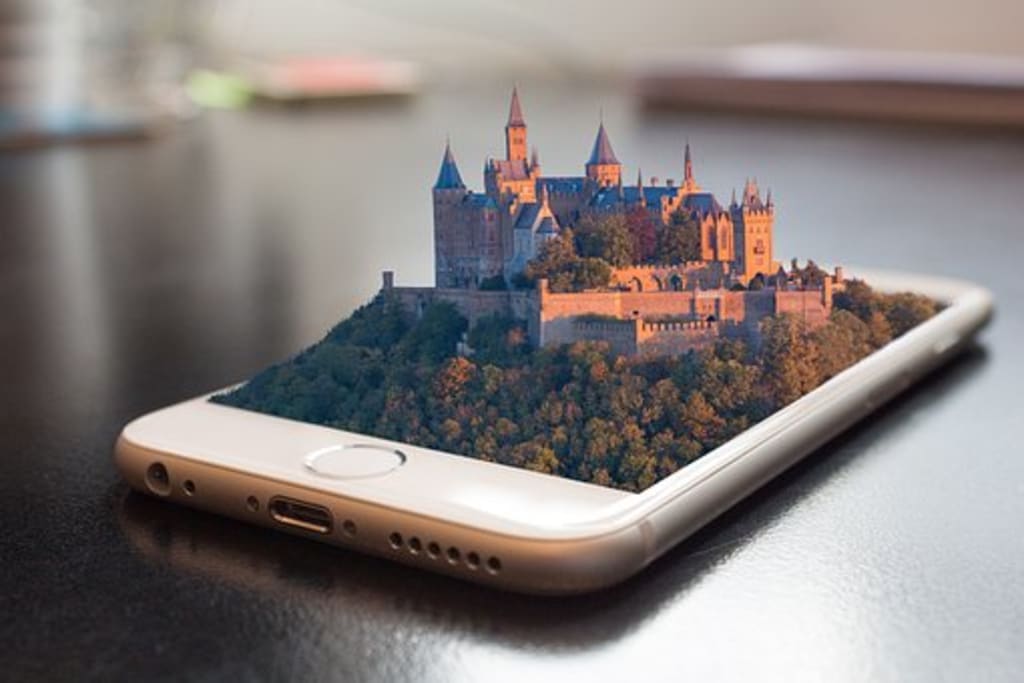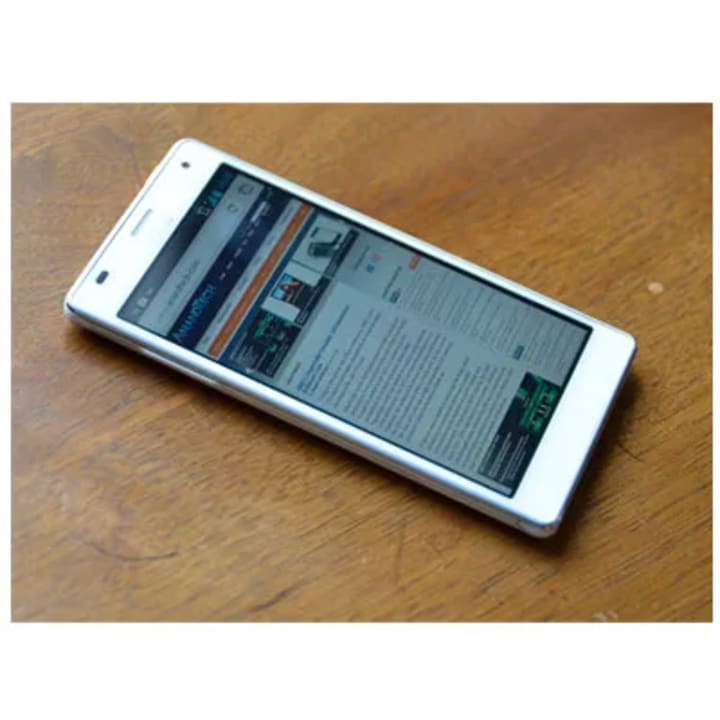Mobile Phones
The history of mobile phones

A mobile phone, also known as a cell phone, is a portable device that allows you to make and receive calls and send text messages, as well as perform a variety of other tasks such as emailing, browsing the web, taking photos, playing games, etc. Mobile phones are typically powered by batteries and use cellular networks to connect to the internet and make voice and data transfers.
The history of mobile phones
The history of mobile phones can be traced back to the early 1970s, when the first cellular network was launched in the United States. These early phones were large and expensive, and were primarily used by businesses and wealthy individuals. Over time, mobile phones became smaller, less expensive, and more accessible to a wider range of people, leading to a rapid increase in their popularity.
In the late 1990s, the introduction of smartphones, which combined the features of a mobile phone with those of a computer, revolutionized the industry. These devices allowed users to browse the web, send and receive email, and access a growing number of apps, among other things. This new level of connectivity and functionality helped to drive the widespread adoption of mobile phones, which are now an essential part of daily life for billions of people around the world.
Type of mobile phone
There are several types of mobile phones available in the market, including:
Smartphones:
Advanced mobile phones that can perform a variety of functions such as browsing the web, running apps, taking photos and videos, and connecting to social media.
A smartphone is a type of mobile phone that combines the features of a computer with those of a traditional mobile phone. They run on operating systems such as Android, iOS, or Windows and have a touch screen interface for navigation. Some of the features and capabilities of a smartphone include:
-Making and receiving voice and video calls
-Sending and receiving text messages and emails
-Browsing the web
-Running a variety of apps, such as games, social media, navigation, etc.
-Taking photos and videos with a built-in camera
-Playing music and videos
-Using GPS for navigation
-Connecting to wireless networks, such as Wi-Fi or cellular data
-Storing and managing data, such as contacts, calendar, etc.
Smartphones have become an essential part of daily life for many people and have dramatically changed the way we communicate, access information, and entertain ourselves.
Feature phones:
Basic mobile phones that typically offer limited functionality compared to smartphones, but are often more affordable.
Feature phones, also known as basic phones, are a type of mobile phone that offer limited functionality compared to smartphones. They typically have a simpler interface, with a keypad and small screen, and lack the processing power and storage capacity of a smartphone. Some of the key features of a feature phone include:
-Making and receiving voice calls
-Sending and receiving text messages
-Playing music and videos
-Taking photos with a built-in camera
-Running basic games and apps
-Using Bluetooth for wireless connectivity
-Storing and managing contacts and calendar entries
Feature phones are often more affordable than smartphones and have longer battery life, making them a popular choice for people who don't need the advanced capabilities of a smartphone. They are also often more durable and less likely to break if dropped.

Rugged phones:
Durable phones designed for use in harsh environments or for outdoor activities, with features such as water and dust resistance.
Rugged phones are a type of mobile phone designed for use in harsh environments or for outdoor activities. They are built to withstand exposure to elements such as water, dust, and extreme temperatures, and are often shock-resistant. Some of the key features of a rugged phone include:
-Water and dust resistance
-Shock-resistant casing
-Loud speaker and microphone
-Long battery life
-Built-in GPS
-Compass and barometer
-High-resolution camera
-Support for outdoor activities such as hiking and camping
Rugged phones are popular with people who work in challenging environments, such as construction workers, firefighters, and military personnel, as well as outdoor enthusiasts. They are designed to be durable and reliable, and are often certified to meet military standards for ruggedness.
Flip phones:
Mobile phones with a clamshell design that open and close like a book.
A flip phone, also known as a clamshell phone, is a type of mobile phone with a clamshell design that opens and closes like a book. Flip phones were popular in the early 2000s, and are now considered a classic design. Some of the key features of a flip phone include:
-Compact design that is easy to carry
-Protected screen when closed
-Large keypad for easy texting and dialing
-Long battery life
-Durable construction
-Basic camera for taking photos
Flip phones are often more affordable than smartphones and are simple to use, making them a popular choice for people who want a basic mobile phone for making calls and sending text messages. They are also often more durable than smartphones and less likely to break if dropped.
Slider phones:
Mobile phones that slide open to reveal a keypad.
A slider phone is a type of mobile phone that slides open to reveal a keypad. The design allows for a larger screen and keypad compared to a flip phone or bar phone, while still retaining a compact form factor. Some of the key features of a slider phone include:
-Larger screen for viewing content
-Sliding mechanism to reveal keypad
-Basic camera for taking photos
-Music player for playing audio files
-Bluetooth connectivity for hands-free calls and wireless headphones
-Long battery life
Slider phones were popular in the mid-2000s, and offered a compromise between the compact design of a flip phone and the larger screen of a smartphone. While they are now less common, they are still a viable option for people who want a basic mobile phone with a larger screen.

Bar phones:
Simple, rectangular-shaped mobile phones with a screen on one side and a keypad on the other.
A bar phone, also known as a candybar phone, is a type of mobile phone that is shaped like a rectangle and has a screen on one side and a keypad on the other. Bar phones are one of the simplest and most basic designs for a mobile phone. Some of the key features of a bar phone include:
-Compact design that is easy to carry
-Basic keypad for texting and dialing
-Long battery life
-Built-in camera for taking photos
-Music player for playing audio files
-Bluetooth connectivity for hands-free calls and wireless headphones
Bar phones are often more affordable than smartphones and are simple to use, making them a popular choice for people who want a basic mobile phone for making calls and sending text messages. They are also often more durable than smartphones and less likely to break if dropped.
Camera phones:
Mobile phones with high-quality cameras, often with additional features such as optical zoom and image stabilization.
Camera phones are mobile phones with integrated cameras that allow users to take photos and videos. They are a type of smartphone that emphasizes photography as a key feature, and often come with advanced camera technology, such as multiple lenses, large image sensors, and software features for editing and enhancing photos. Some of the key features of a camera phone include:
-High-resolution camera for taking photos and videos
-Multiple lenses for wide-angle, telephoto, and depth sensing
-Software features for editing and enhancing photos
-Built-in flash for low light conditions
-Image stabilizationization for smooth and stable videos
-Large screen for previewing photos and videos
-Wireless connectivity for sharing photos and videos with friends and family
Camera phones have revolutionized the way people capture and share their memories, making it easier than ever to take high-quality photos and videos on the go. They are popular with photographers and travelers, as well as everyday users who want to capture their experiences and share them with others.
5G phones:
Mobile phones that support the latest 5G cellular technology, which offers faster speeds and lower latency.
5G phones are mobile phones that support the 5G network, which is the fifth generation of wireless technology. 5G networks offer faster speeds, lower latency, and improved capacity compared to previous generations of mobile networks. Some of the key features of a 5G phone include:
-5G connectivity for faster data speeds and lower latency
-Improved performance for gaming, video streaming, and other data-intensive activities
-Larger battery life to support 5G capabilities
-New hardware components to support 5G, such as millimeter-wave antennas
-Support for virtual and augmented reality experiences
-High-resolution cameras for capturing photos and videos in 5G environments
5G phones represent the future of mobile technology, offering users faster and more reliable connectivity for a wide range of applications. As 5G networks continue to roll out globally, 5G phones will become increasingly common, offering users the benefits of 5G in a convenient and portable form factor.






Comments
There are no comments for this story
Be the first to respond and start the conversation.